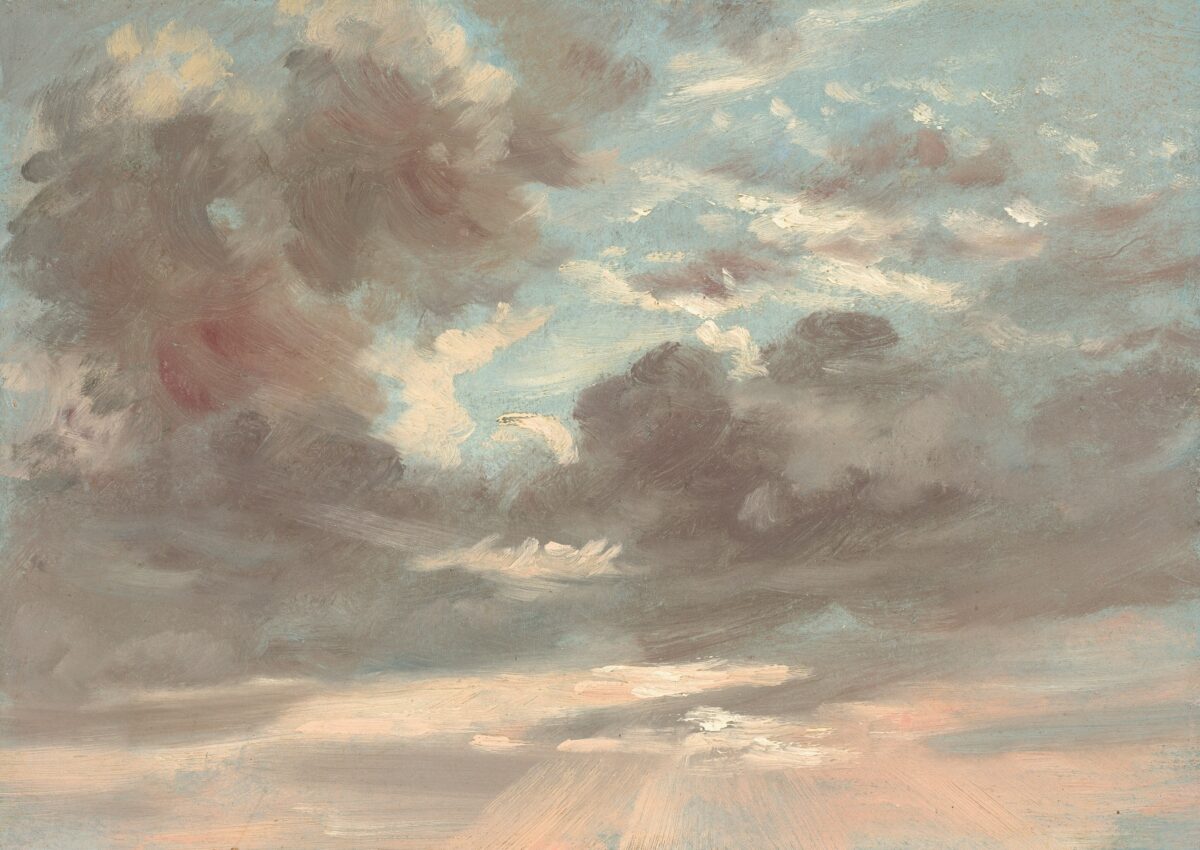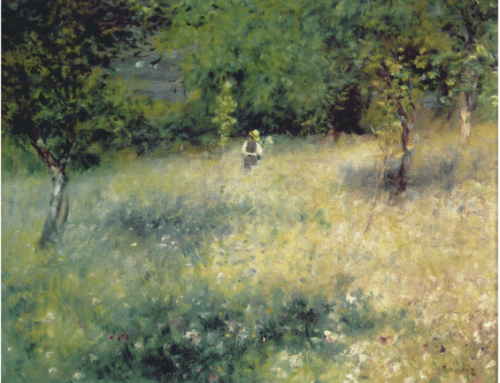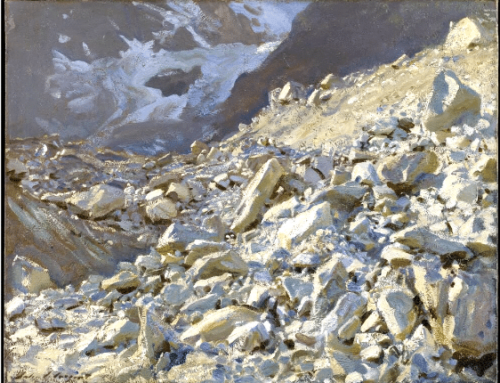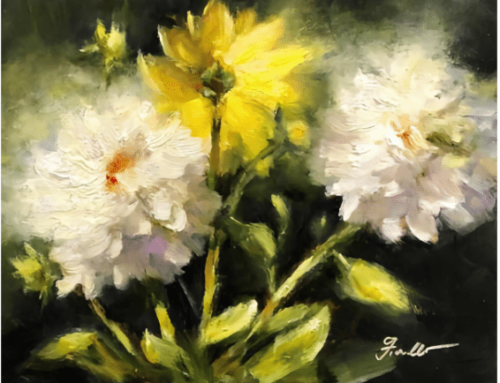The art world discovered John Constable’s celebrated cloud studies after his death, when his daughter bequeathed them to the UK’s Victoria Albert Museum.
Constable painted dozens of them in both oils and watercolors. He did them directly, en plein air, working fast. They were not for exhibition but for use in his studio landscapes.
Constable’s renown as arguably Britain’s greatest landscape painter, combined with his beautiful, unfussy renderings of these sweeping cloudscapes with delicate colors, have made these studies coveted by museums and collectors the world over. There is in many of them a marvelous sense of vast open spaces within the intimate confines of a small canvas or piece of paper.

John Constable, Sky study with a shaft of sunlight, Fitzwilliam Museum
Below, in the watercolor at the Metropolitan Museum in New York, called simply Cloud Study, we can see the hallmarks of these gems: astute observational rendering in the service of sweeping motion, scale and atmosphere . The museum describes it as follows:
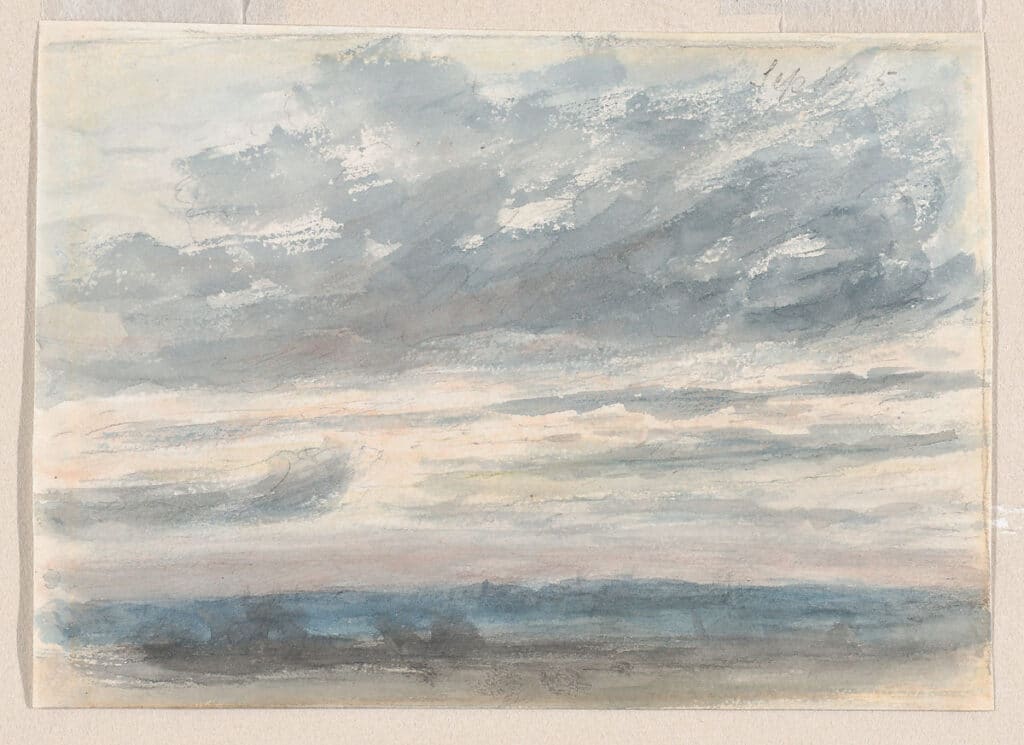
John Constable, Cloud Study, Met Museum
“On a sketchbook page worked outdoors, Constable captures a September sun sinking through clouds. The artist’s studies of England’s changeable skies are considered among his most characteristic works, part of a systematic and pioneering effort across decades to record varying weather conditions at different times of day.”
Since Constable’s day, artists have developed various methods for rendering and teaching clouds and sky.
Interesting side note: there’s a cloud study at the Tate that hides an inscription on the back in which Constable evidently clocked his time – one note says ‘11 o’clock’ and the other ‘Noon,’ indicating, says the museum that it took him about an hour to paint.
When High Art and Haute Couture Collide
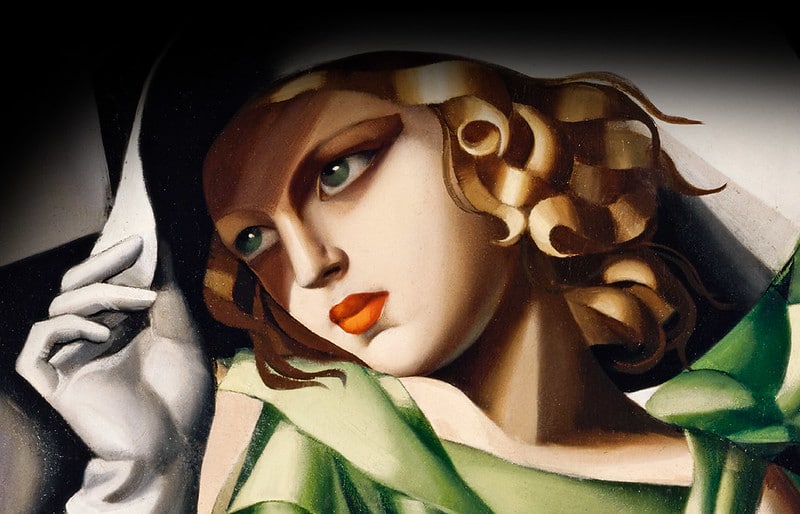
© 2019 Tamara Art Heritage / ADAGP, Paris / ARS, NY
Glamour and artistic modernism met in masterpieces when Polish artist Tamara de Lempicka, nicknamed “The Baroness with a Brush,” created her dynamic self-portraits and paintings of women rendered in chic, Art Deco style.
The Met Museum is currently displaying several of her iconic works. In their words, Lempicka’s “stylish artwork oozes feminine power and sensuality, and celebrates the independence and liberation of 1920s women. Lempicka once said, “I live life in the margins of society, and the rules of normal society don’t apply to those who live on the fringe.” A full story can be enjoyed right here.

